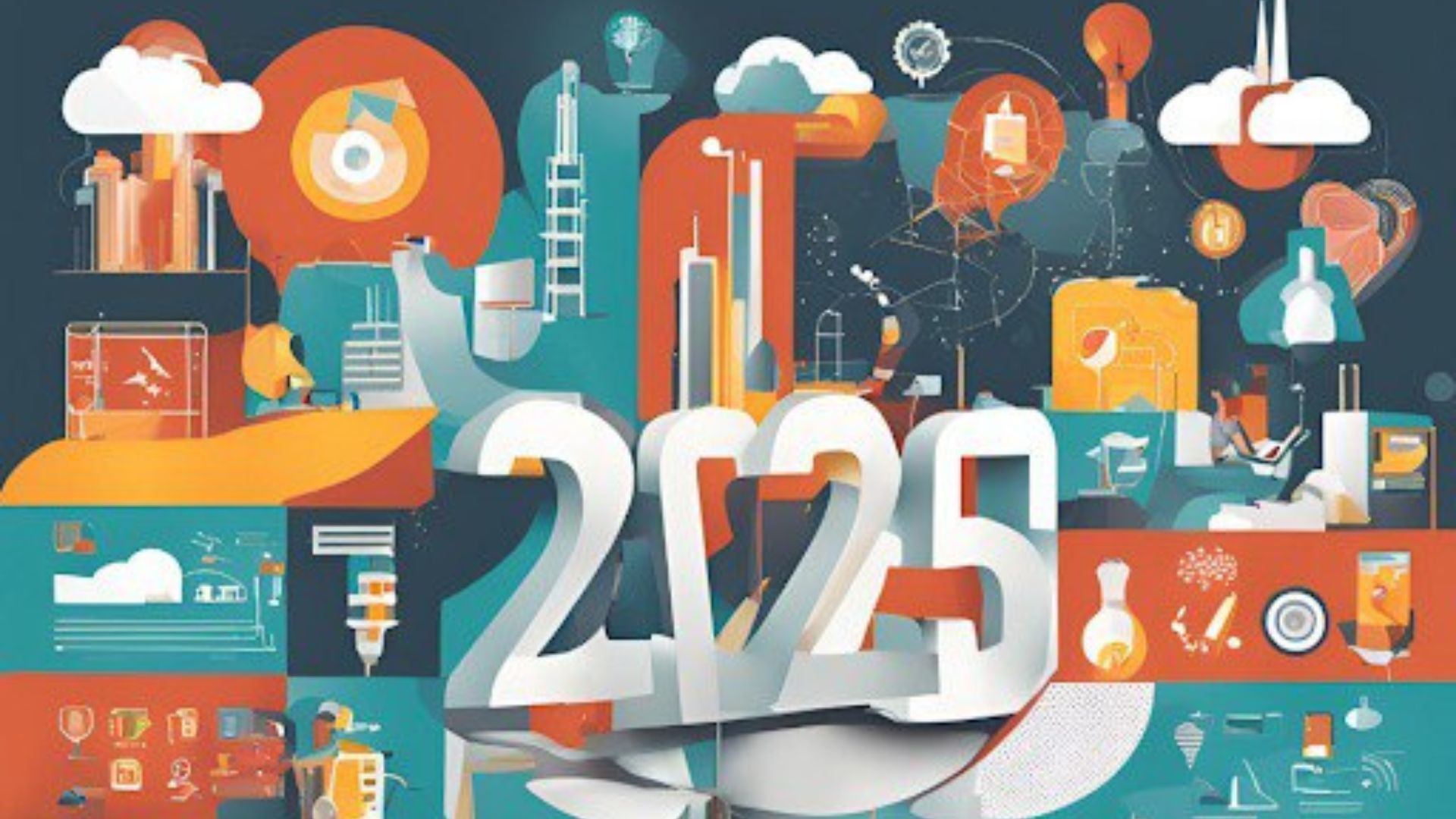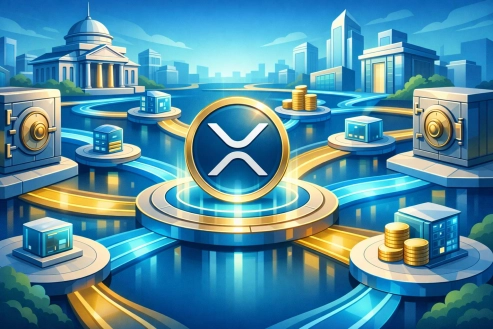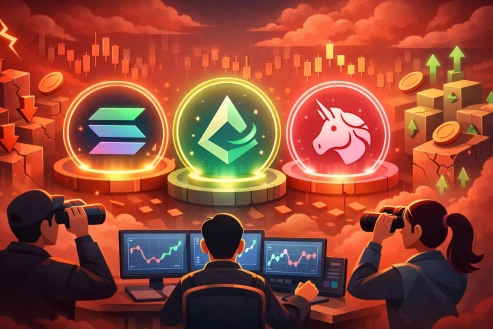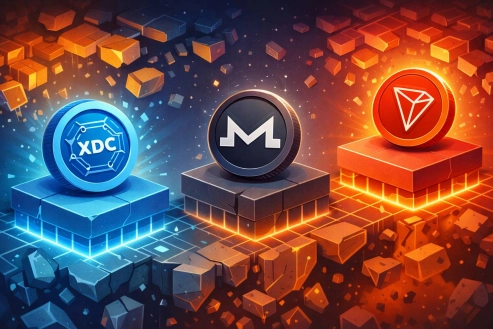The Leading Innovative Trends Set to Transform Blockchain Technology by 2025
Blockchain technology has achieved remarkable advancements in innovation, value, adoption, and regulatory frameworks over the last decade, surpassing all other sectors to emerge as the world’s fastest-expanding industry. As one of the 21st century's most transformative innovations, it has reshaped industries by ensuring enhanced transparency, security, and decentralization.
However, critics argue that despite its innovations in areas like healthcare, real estate, supply chain management, and governance, blockchain has yet to demonstrate its capacity to address real-world issues effectively. This perspective holds some truth. Although hundreds of millions globally have engaged with the technology, a significant number still see it mainly as a speculative tool, buying cryptocurrencies with hopes of quick wealth.
This article seeks to counter the notion that blockchain is solely for speculative use. We will explore its practical applications and the rapid innovations occurring within the space, demonstrating how it is expanding its scope beyond traditional uses like cryptocurrencies. Furthermore, we will examine the leading emerging blockchain trends poised to revolutionize technology by 2025, highlighting some projects spearheading this wave of innovation.
Emerging Innovative Trends in Blockchain Technology
As previously mentioned, blockchain technology has been pivotal in leading 21st-century technological revolutions. Yet, the blockchain sector itself is undergoing a transformative change, with new innovations surfacing every few months.
Among the notable advancements is the development of interoperability and cross-chain solutions. Historically, blockchain innovation has faced challenges in network connectivity, with each network operating within its isolated ecosystem. This has resulted in fragmented liquidity, inefficient data exchange, and stunted innovation across blockchain systems. As we move forward, interoperability will play a vital role in facilitating seamless data exchange and asset transfers across networks. Building effective cross-chain networks will be crucial to creating a robust, interconnected blockchain ecosystem, enhancing scalability, innovation, and efficiency as the blockchain universe expands.
Additionally, the blockchain ecosystem is undergoing swift changes in decentralized finance (DeFi), as communities strive to develop more scalable and user-friendly platforms. By 2024, DeFi has transitioned from basic transactions like borrowing, lending, and staking to more sophisticated financial instruments such as restaking, tokenized real-world assets, and insurance. This new wave, often termed DeFi 2.0, holds the promise of fostering greater financial inclusion for the underbanked and unbanked by offering a more secure, accessible, and user-friendly experience.
Lastly, blockchain is increasingly merging with futuristic technologies like artificial intelligence, machine learning, and big data to drive the next generation of innovative products. This integration allows blockchain platforms to be more intelligent, adaptive, and secure. It paves the way for solutions capable of analyzing large datasets, automating processes, and even self-learning.
Key Blockchain Products to Watch in 2025
The previously mentioned advancements are just the tip of the iceberg. Numerous other developments are underway in the blockchain sector, including environmentally friendly innovations, privacy-enhancing technologies, decentralized governance platforms, enterprise blockchain solutions, staking platforms, and more.
While many projects could have been highlighted, the following are those we believe will lead the charge in blockchain innovation by 2025. From time-based frameworks to decentralized data networks and efficiency-focused consensus mechanisms, this list outlines our top blockchain selections for 2025.
-
Analog
Interoperability remains a significant hurdle for developers and users in the blockchain sphere. Analog offers a suite of omni-chain interoperability protocols designed to simplify access to Web3 data and eliminate barriers to cross-chain communication. Through its Timechain, Analog GMP, and Analog Watch, the platform enables developers to create their DApps on any blockchain, ranging from Ethereum to Polkadot and beyond.
At the core of Analog is the Timechain, a sovereign blockchain ecosystem that functions as a ledger for all its operations, essentially acting as an Accountability Layer. The network introduced the Nominated Proof-of-Stake (NPoS) consensus mechanism to ensure high security levels and guarantee that all network activities are transparent and verifiable. The Analog GMP facilitates developers in transferring data and value across chains with unmatched decentralization, security, and cost-effectiveness.
-
Chrono.tech
While blockchain's utility has largely centered around investment opportunities, one company is shifting the focus to address global employment challenges. The Australian-based blockchain company Chrono.tech is opening up a new realm of job opportunities for anyone with internet access worldwide. The company concentrates on human resource solutions for enterprises and businesses globally, enabling them to source talent and compensate their employees efficiently and equitably.
Chrono’s primary aim is to reduce and eliminate obstacles in recruitment and payment processes for both workers and employers. The platform operates four major services to enhance global employment efficiency: LaborX (a worldwide recruitment platform connecting individuals with job opportunities and facilitating crypto payments), TimeX (a hybrid exchange providing users with faster, secure, and cost-effective transactions, along with protection against front-running and illicit activities), PaymentX (an automated cryptocurrency payroll solution for businesses), and AUDT (a stablecoin pegged to the Australian dollar at a 1:1 ratio).
-
Fetch.ai
As artificial intelligence gains prominence, blockchain companies are increasingly incorporating the technology into their offerings. Fetch.ai is a company that facilitates developers in creating AI platforms and services on a blockchain. The platform empowers anyone to build and deploy AI services, such as negotiators and agents, on a large scale, at any time and convenience. This decentralized AI-powered platform enables autonomous machine-to-machine transactions and services, impacting various sectors like supply chain management and data interoperability.
Furthermore, Fetch AI allows users to monetize their distinct AI agents, apps, and services. Users can join the platform’s ‘Agentverse’ to test the effectiveness of their AI Agents' semantic descriptors and gain analytical insights to enhance their discoverability on the platform.
-
Band Protocol
The introduction of oracles in the blockchain domain has significantly improved the space, enabling networks—which traditionally depended on internal data—to integrate external data into the blockchain. This advancement supplied blockchains with verified, off-chain data, allowing smart contracts to interact more dynamically with the external world. While Chainlink led the way in developing oracles within the blockchain ecosystem, several platforms, notably Band Protocol, are now emerging to challenge its dominance.
Band Protocol is a cross-chain data oracle platform that aggregates and connects real-world data and APIs to smart contracts. The platform is establishing itself as a formidable competitor to Chainlink in the oracle space through its innovative cross-chain data oracle feeds. Utilizing the Cosmos SDK and its own blockchain, BandChain, it offers a customizable, flexible, and scalable oracle solution to multiple blockchains. This could lead to the creation of complex DApps that share data, fostering enhanced innovation across the broader blockchain landscape.
-
Energy Web
li>
Finally, 2025 might be the year when Web3 projects truly lead the creation of energy-efficient and sustainable products. Platforms like Energy Web are harnessing blockchain technology to assist global companies in identifying, transforming, and validating specific business processes to make them more sustainable.
As the push for businesses to become "greener" intensifies, platforms like Energy Web are integrating blockchain technology to make this vision a reality. The company allows businesses to use its native currency, $EWT, to set up, launch, and maintain distributed computing networks that process data from external sources, execute custom workflows, and vote on outcomes to achieve consensus on making their operations more environmentally friendly.
Additionally, the blockchain aims to decarbonize the energy sector by enabling companies to conduct peer-to-peer trades on carbon credits, accelerating their climate targets.
Conclusion
In summary, the rapidly evolving blockchain landscape is poised to continue its trajectory in 2025, with new innovations aimed at societal advancement. These developments will not only redefine blockchain's potential but also reshape industries worldwide.
From artificial intelligence and decentralized data networks to interoperability and sustainable energy, blockchain will be at the forefront of this technological innovation wave. It's an exciting era to be involved in this space, and we eagerly anticipate what the future holds.
Disclaimer: This article is provided for informational purposes only. It is not offered or intended to be used as legal, tax, investment, financial, or other advice.
Investment Disclaimer


















